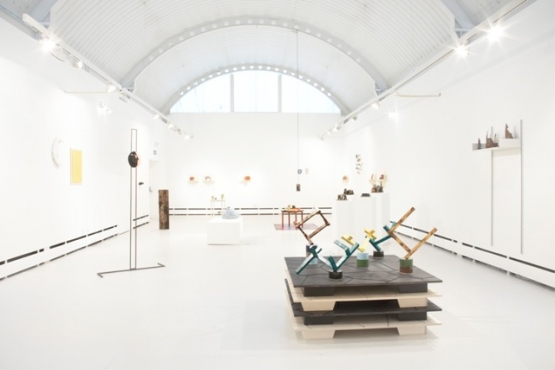The approach that the artists in Slipped have taken to working in clay is as an extension of their performance, painting or sculptural practices, resulting in work that often takes the materiality of clay as a starting point for pieces that combine the tactile nature of ceramic with conceptual rigour.
Slipped highlighted the potential of Wysing to act as a catalyst for collaborations between artists; much of the work was created in Wysing's on-site ceramics studio especially for the exhibition. Works demonstrated an interest in folk arts, craft, British modernism and legacies of twentieth century art and design and included domestic, potentially functional objects, painted plaques, small installations and freestanding sculpture.
For Slipped, The Grantchester Pottery, developed by Phil Root and Giles Round at Wysing, presented its first full range of domestic wares in a postmodern palette. Drawing on historical precedents such as Roger Fry's Omega Workshops, The Grantchester Pottery is interested in collective approaches to production.
